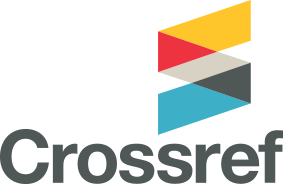THE EFFECT OF ENERGY IN THE CONCENTRATE ON IN VIVO DIGESTIBILITY OF FAT-TAILED SHEEP
Abstract
The research was carried out at the CV. Agriranch in Brak Village, Karangploso District, Malang Regency from May until June 2009. Proximate analysis was carried out at the Animal Nutrition Laboratory, Animal husbandry Faculty, Brawijaya University. Objective of this research was to investigate the effect of TDN level in the concentrate for the in vivo digestibility. The materials used were : (1) Nine fat-tailed rams with the initial body weight 14 kg: (2) Concentrate (3) Corn stover silage. The experiment used Completely Randomized Design with 3 treatments and 3 replications. The treatments were 3 levels of concentrate: P1 feeding concentrate level TDN 78%; P2 at level TDN 80%; P3 at level TDN 82% (3.12% DM from the body weight) and ad libitum corn stover silage. Variables examined were feed intake and digestibility. The result of the research showed that fat tailed sheep obtaining low TDN concentrate increased feed intake (P<0.05). The highest DM, OM, CP feed intake on the P1 were 97.85 g/kg body weight0.75/day; 85.66 g/kg body weight0.75/day; 17.59 g/kg body weight0.75/day. Fat tailed sheep obtaining low TDN concentrate its digestibility is lower than those with higher TDN concentrate (P<0.01). The highest DM, OM, CP digestibility on the P3 were 74.65%; 77.99%; 77.23%. Digestible consumption nutrient did not effect (P<0.05) except digestible consumption CP (P<0.01). The highest DM, OM, CP digestible feed intake on the P1 were 66.62 g/kg body weight0.75/day; 63.48 g/kg body weight0.75/day; 13.59 g/kg body weight0.75/day. The conclusion of the research was the increase of the feed intake was intended for fulfilling the energy need. The increase of the feed intake was caused by the increase of forage consumption, so the digestibility decreased. Digestible feed intake was influenced more feed intake than digestibility.
Key words : concentrate, energy level, in vivo digestibility, fat-tailed sheep
Refbacks
- There are currently no refbacks.

This work is licensed under a Creative Commons Attribution-NonCommercial 4.0 International License.










